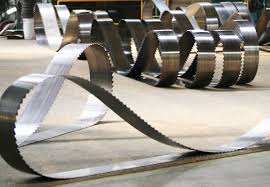Tech Tips
Ultimate Guide for Live Streaming Using SDK
If you are wondering how to start live streaming using SDK, read on for a comprehensive look at the topic. You will learn how to connect audio and video sources, encode and distribute live streams, and promote your events.
Connecting Audio and Video Sources to Your Live Streaming Setup
If you are a live streamer, you know that a strong internet connection is essential to a live-stream setup. This will ensure that viewers can watch your streams without waiting long for the video to load.
There are also some other must-have components to a video streaming software setup. These include a microphone, camera, and streaming platform. However, most people need to learn that these pieces of equipment are only part of the equation. You’ll also need an encoder and a capture card.
An encoder is a tool that converts an input signal into a compressed digital format. The encoder then sends this data to a streaming destination. In some cases, you’ll need an interface to control the encoder.
For example, you can configure your audio channel, sample rate, and bit rate. All of these settings can be found in the encoder’s configuration menu. The steps for completing these tasks may vary depending on your particular model.
A solid Internet connection is also a good idea since most live streaming services use the H.264 codec to stream video. A good quality streaming solution requires at least 1000 Kbps of bitrate.
Similarly, you’ll also want to ensure your computer is correctly configured for live streaming. A suitable streaming device will also need an HDMI cable.
Finally, an SDK is the best way to connect your audio and video sources to your streaming setup. This will allow you to get the most out of your live-streaming experience.
Encoding Audio and Video
Live streaming is a popular way to deliver content online. The process includes encoding audio and video. This reduces bandwidth requirements for live streams and increases compatibility with different devices. Knowing how to encode both data types can improve video quality and minimize storage space. Using a software or hardware encoder can also help you save on CPU usage.
Video SDK provides a table to determine the recommended bitrate and frame rate for low- and high-quality video streams. In addition, it also lets you choose the orientation and mirror mode for your video. It also integrates call quality optimization features.
Before encoding audio or video, you should consider your application’s needs. This includes the number of users on the channel, the devices and locations they use, and the network conditions they are operating. Also, make sure you have an appropriate backend server.
You can choose from different audio codecs and formats. Some codecs focus on compression, while others are more specialized.
In some cases, the audio or video will not playback in sync. This may be caused by a frame rate or the length of the streams. If the audio is too fast, you can fix this by encoding it at a lower bit rate. However, if the audio needs to be faster, a two-pass encoding may be a solution.
While various options are available, the most crucial choice is balancing quality and support. It is also essential to know which streaming services are supported.
Creating a Live Event
The first step in creating a live event is to set up an encoder. This includes the input protocol and the stream key. Once this is done, you can start the streaming process. It’s a good idea to test the stream to ensure it’s up to your standards.
Next, you will want to create a video clip. This is covered in the Create a Video Clip using the Live Module.
You will need the Player URL and a remote asset URL. The URL will be used to display the live stream. Users who click on the Player URL will take them to a preview page.
The video stream will be delivered through the RTMP protocol. The video clip will be displayed in the Media module. In addition, you can add captions and server-side ads to the live stream.
Aside from the video, you will need to configure the live event settings. These settings determine how the stream will behave. They also set how long content is retained after the live event. Some of these options are specific to each event.
Promoting Your Livestream via Email
You can record, gather analytics, and share your live streams across multiple platforms using live streaming software. But to reach as many people as possible, you need to promote your live streams. One of the most effective ways to do this is through email. Most event creators say that email is their most effective marketing tool. Below are some strategies to help you promote your live streams via email.
First, you should build an email list. You can add a link to your Livestream at the bottom of every email you send. Then, you can send out a promotional newsletter or an email blast, which will give people a glimpse of your stream. You can even promote your Livestream through your blog if you have a blog. For example, you can write a guest post for another blog and then plug your Livestream into the end of the article. By promoting your live stream in your blog, you are helping to spread awareness on popular blogging platforms.







